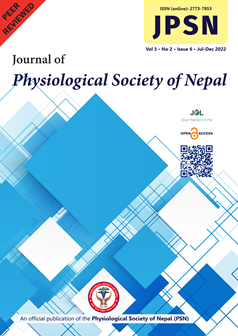Physiology Teaching Trends in Current Nepali Medical Schools: Navigating the Road Ahead in the AI Era
DOI:
https://doi.org/10.3126/jpsn.v3i2.65255Keywords:
N/AAbstract
Nepal, nestled in the Himalayas, faces unique challenges in medical education. As the world embraces technological advancements, Nepali medical schools must adapt their teaching methodologies to prepare future physicians effectively, especially in the wake of experiences with the challenges of the COVID-19 pandemic.1 In this editorial, we explore the current trends in physiology teaching and envision the role of artificial intelligence (AI) in shaping medical education. Nepali medical schools recognize the importance of humanistic values. Beyond textbooks and exams, educators emphasize empathy, compassion, and effective communication. Students learn to view patients as more than just medical cases, fostering a patient-centered approach. Students engage with patients early in their training, following them through various clinical settings. Beyond hospital walls, medical schools encourage community engagement. Students participate in health camps, awareness programs, and public health initiatives. This community-centric approach instills social responsibility and cultural sensitivity. Nepal’s diverse population and unique health challenges provide rich learning opportunities. Students explore global health issues, underserved communities, and preventive strategies. This broadens their perspectives and prepares them for a dynamic healthcare landscape. However, traditional didactic lectures struggle to engage students, and practical exposure follows age-old methodologies that struggle to bridge the technology of the 21st century. Advanced technology plays a crucial role in medical education.2 Nepali medical schools should incorporate active learning methods, individualization, social interaction, and resource accessibility. Though, interactive lectures, case-based discussions, and problem-solving sessions complement passive didactic teaching, like any other underdeveloped country, Nepal grapples with limited infrastructure, outdated textbooks, and overburdened faculty.
Downloads
Downloads
Published
How to Cite
Issue
Section
License
Copyright (c) 2024 Journal of Physiological Society of Nepal

This work is licensed under a Creative Commons Attribution-NonCommercial 4.0 International License.

